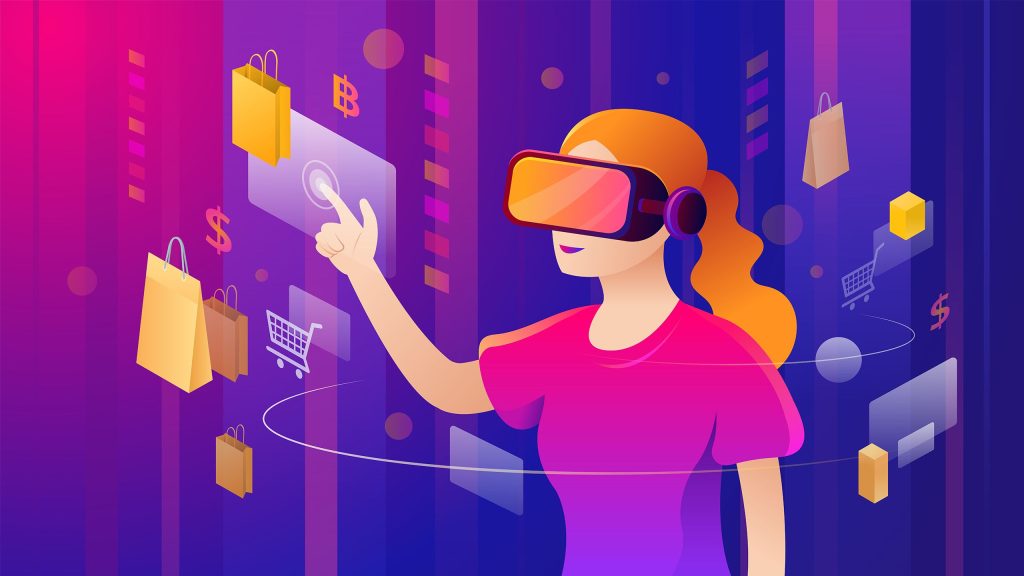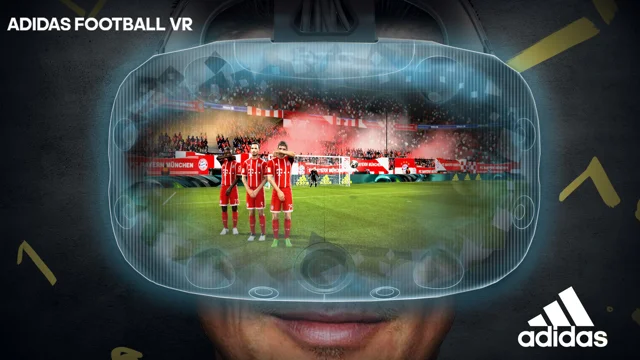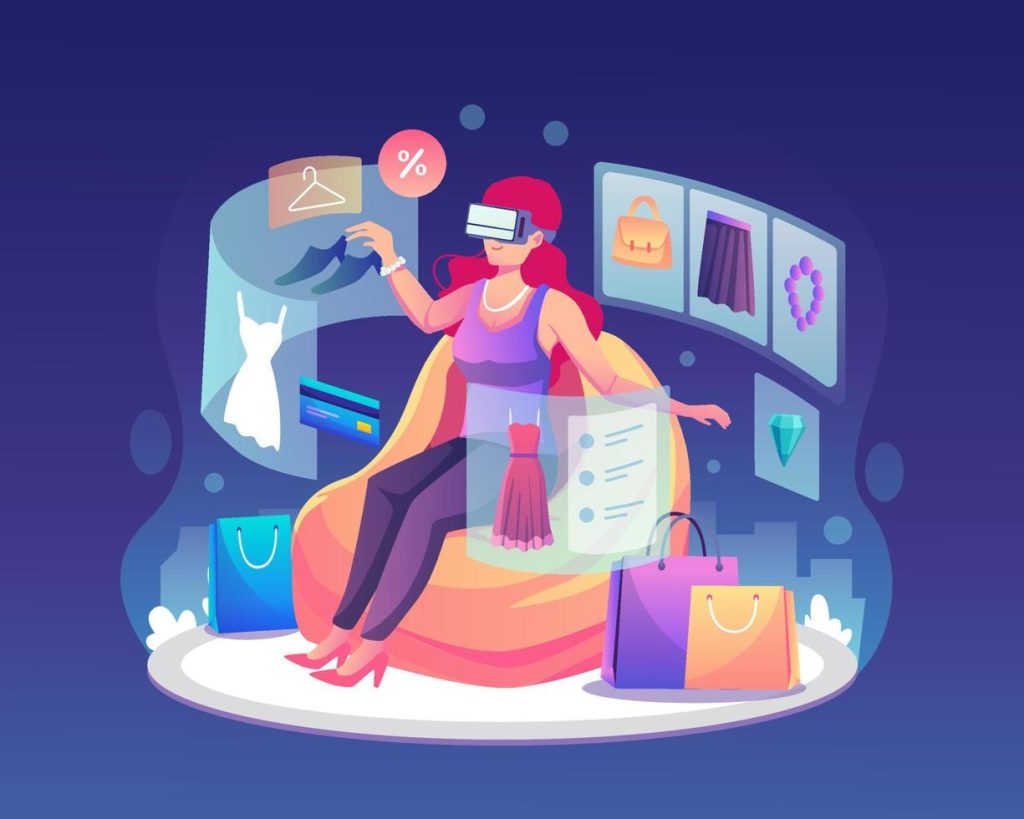In today’s day and age, innovation has become crucial to staying ahead of competition. With rapid advancement of technology and the amount of information shared online, marketers are seeking innovative ways to capture and engage with audiences and forge meaningful emotional connections with consumers. There appears the realm of Virtual reality (VR) technology that revolutionized the gaming and entertainment industry and the way a brand engages with the audience.
In this article we will explore the world of virtual reality, its integration in marketing strategies and numerous benefits it offers. Additionally, we will look at some examples of brands successfully using virtual reality marketing.

What is Virtual Reality (VR)?
Virtual reality or VR in simple terms, is an immersive experience, generated by a computer that consists of scenes and objects that appear to be real to the user. It utilizes special technologies, like headsets and controllers, that allow the user to be set in the centre of action, rather than view it passively, as it had been the case until now.
The Evolution of Marketing
Marketing has always evolved along with technology, for example moving from physical media like newspapers to digital media. However none of the options has allowed marketing to find a truly immersive way to engage consumers, until now. These new virtual reality technologies allow brands to bridge the gap between experience and action.
With virtual reality technologies already entering the marketing world, it is paramount for marketers to adapt their strategy, in order to not lag behind competition, especially with VR technology becoming more accessible and affordable, like the Apple Vision Pro.
Benefits of Virtual Reality Marketing
Immersive brand experience
Virtual reality presents brands a platform, where they can showcase their products and services in a way that traditional media can not. By transporting the user to a virtual world, brands can create memorable experiences. From exploring virtual showrooms to participating in an interactive brand activation, virtual reality allows users to engage with brands on a more personal level and encourage stronger emotional connections.
Emotional engagement
Arguably, one of the more important factors of virtual reality is the ability to evoke emotions in a user better than any form of traditional media. By immersing the user in sensory-rich environments and well executed story-telling, brands can create experiences that will resonate with the user on a deeper level.
An important factor to consider is the user-brand dynamics that virtual reality creates. Whereas in traditional digital media users often utilize programs like ad blockers or simply opting out of an ad, people are seeking out VR immersive experiences, even if they are branded, which presents an opportunity for marketers to integrate their strategies seamlessly. This in terms means that brands are able to capture users attention for longer periods, which leads to a higher brand recall and encourages the user to share their experience with others.
Enhanced personalization
Virtual reality technology empowers brands to deliver highly personalized experiences tailored to individual users. By leveraging data insights, brands can create content that resonates with each user on a personal level, allowing them to envision themselves better.
A prime example of this are virtual try-on experiences, where users can virtually try on clothes, accessories, or even makeup. This immersive experience enables users to visualize themselves with the product, enhancing their connection with the brand and driving purchase intent.
Successful examples of Virtual Reality Marketing
Virtual reality is the new reality of marketing, as various brands have already succeeded implementing numerous creative marketing campaigns and immersive experiences. Some examples of those brands are campaigns are:
- Virtual Try-On: Sephora has successfully integrated virtual reality technologies that allow users to try on different makeup products, before making an informed purchasing decision
- Immersive Brand Storytelling: Volvo allows users to take their new model for a “weekend getaway” from home, allowing them to experience a virtual adventure and examine the car’s interior from their living room
- Enhanced Product Interaction: Pokemon Go created an interactive experience for consumers, driving foot traffic and increasing brand visibility
- Virtual Showrooms: IKEA has launched virtual showrooms, that allows users to visualize how furniture will look in their own homes, leading to increased customer satisfaction and reduced returns
- The Adidas Football VR Experience: Adidas customers were able to try on a headset and foot sensors and participate in a virtual reality football match, allowing them to picture themselves as professional football players, enhancing emotional reaction to the immersive experience. They also recorded them and let them post the experience on social media, ultimately providing even a bigger reach with this campaign

Conclusion
Virtual reality might not be a replacement for traditional digital marketing methods yet, but it is undeniably the future. Through immersive experiences, virtual reality offers brands unparalleled opportunities to create unforgettable connections with its users. From enhanced product interaction to virtual showrooms, virtual reality captures user attention and it is clear that it will indeed be the new reality of marketing. While some challenges still remain, virtual reality is set to revolutionize how brands connect with consumers.
Sources
Immersive Brand Storytelling: The Power of AR and VR in Marketing, (March 9 2024), Laiz & Associates, from https://www.laizmarketing.pro/insights/immersive-brand-storytelling-the-power-of-ar-and-vr-in-marketing
Geri Mileva (October 25, 2023). Top 15 Marketing examples for 2024.Influencer Marketing Hub, from https://influencermarketinghub.com/vr-marketing-examples/
Robert Sheldon (August, 2022). Virtual Reality. Tech Target- What is?, from https://www.techtarget.com/whatis/definition/virtual-reality
How Virtual Reality Can Boost A Brand’s Storytelling (September 14, 2016). Digital Marketing institute, from https://digitalmarketinginstitute.com/blog/how-virtual-reality-can-boost-a-brands-storytelling
Sumit Tiwari (February 29,2024). Maximizing Personalization in Virtual Reality Experiences. Medium, from https://medium.com/@rm.teamdigitalorix/maximizing-personalization-in-virtual-reality-experiences-44802bd77be3
